Teaching Systems-Thinking Concepts with Hypothetical Case Scenarios: An Exploration in Food-Systems Science Education
Abstract
1. Introduction
1.1. Systems Thinking as a Method for Sustainable Food Systems Education
1.2. Study and Educational Context: Sustainable Marine Eco-Food Systems
1.3. Theoretical Framework and Epistemological Perspective
Transformative learning refers to the process by which we transform our taken-for-granted frames of reference (meaning perspectives, habits of mind, mind-sets) to make them more inclusive, discriminating, open, emotionally capable of change, and reflective so that they may generate beliefs and opinions that will prove more true or justified to guide action. Transformative learning involves participation in constructive discourse to use the experience of others to assess reasons justifying these assumptions, and making an action decision based on the resulting insight.(p. 76, italics added)
2. Materials and Methods
2.1. Instrument Development
2.1.1. Quantitative HCS Instrument
2.1.2. Qualitative Focus Groups
2.2. Data Collection and Analysis
3. Results
3.1. Responses to the Seafood Hypothetical Case Scenarios
3.2. Navigating the Hypothetical Case Scenarios from a Systems-Thinking Perspective
I chose prioritizing sustainability because in the long run that would last longer than prioritizing feeding the population. If you fed them all too much at once then you could run out quicker. But if you did sustainability, it could last a little bit longer.
[When] choosing between social media or government intervention, everyone doesn’t have social media. Social media is just [for] a certain generation, or everyone is on different social media sites [….] I feel like it would be hard to reach people with a social media campaign over the government.(FG8)
I [would] still choose what I chose, but I’m sad when you know what happened. I made those decisions. I thought that sustainability will always work through and it’s not just planning ahead, because it will work out, but it doesn’t work out.(FG11)
When I prioritized environmental sustainability, I thought that it was going to be the right choice, or it was going to have a good ending. But [… my results] just showed me how […] things that you won’t plan for also go wrong. [In the fixes that backfire scenario…] it’s more than that, it’s consider[ing more] than just a typical, one size fits all type situation to cover up the issue of at hand.(FG9)
I chose to remain in the same location on that first choice because the conservation green lighted it. I figured I’d go ahead and try it and until something new arose instead of trying to preemptively change my mind. Then when something did arise, I chose to go ahead and cut back on those detrimental actions to preserve the environment. I had pretty good outcomes with [that choice].(FG11)
I would stick on that path. I [figured] I would face more cost in the beginning, but that’s a risk that you have to take in a business anyway, and then making those more expensive choices set me up for success in the long run to pay it back and then profit off it.
I [thought,] I’m going to just take the risk of relocating. When it came to the other options, I’d much rather pick high quality over something lower […] So I just want what’s best and then I’m going to assume the consequences of my actions […] It’s just a risk of getting to a higher level, there’s always going to be a risk.(FG2)
I came from a really small town. The people that ran for office were people who grew up there. They wanted the best for the community. I lost reelection but it doesn’t bother me because I did what I thought was best for the community.(FG6)
I feel like something […] that might be interesting is if we wind up with result [increasing investments to local conservation efforts (Figure 3)], there’s room for fishermen to move into tourism. There’s still room to have your own business and make your own money. Maybe you start charging fishing boats [tours …] or something. That’s not really named here but it’s a potential outcome for those fishermen, a potential business.(FG11)
3.3. Hypothetical Case Scenarios as a Transformative-Learning Tool
I think [my choice] has to do with the fact that I grew up in Las Vegas. I was immersed into tourism culture. In my head it didn’t bring benefit. I saw a lot of the bad parts of it. So, I just figured community-based [industry] might be better.(FG6)
I think it was interesting just to get to hear everyone’s perspective and like opinions, because I think it really emphasizes on the fact that your opinions are built [out] of where you come from, who your family is, where you live, and [your] background. So I thought that was interesting to hear about and just to see everyone’s perspective.(FG2)
4. Discussion
5. Conclusions
Author Contributions
Funding
Institutional Review Board Statement
Informed Consent Statement
Data Availability Statement
Conflicts of Interest
References
- Ruth, T.; Rumble, J.; Lamm, A.; Ellis, J. A Model for Understanding Decision-Making Related to Agriculture and Natural Resource Science and Technology. J. Agric. Educ. 2018, 59, 224–237. [Google Scholar] [CrossRef]
- Fensham, P.J. Scepticism and Trust: Two Counterpoint Essentials in Science Education for Complex Socio-Scientific Issues. Cult. Stud. Sci. Educ. 2014, 9, 649–661. [Google Scholar] [CrossRef]
- Ke, L.; Sadler, T.D.; Zangori, L.; Friedrichsen, P.J. Students’ Perceptions of Socio-Scientific Issue-Based Learning and Their Appropriation of Epistemic Tools for Systems Thinking. Int. J. Sci. Educ. 2020, 42, 1339–1361. [Google Scholar] [CrossRef]
- Gilissen, M.G.R.; Knippels, M.-C.P.J.; van Joolingen, W.R. Bringing Systems Thinking into the Classroom. Int. J. Sci. Educ. 2020, 42, 1253–1280. [Google Scholar] [CrossRef]
- Blatti, J.L.; Garcia, J.; Cave, D.; Monge, F.; Cuccinello, A.; Portillo, J.; Juarez, B.; Chan, E.; Schwebel, F. Systems Thinking in Science Education and Outreach toward a Sustainable Future. J. Chem. Educ. 2019, 96, 2852–2862. [Google Scholar] [CrossRef]
- Purvis, B.; Mao, Y.; Robinson, D. Three Pillars of Sustainability: In Search of Conceptual Origins. Sustain. Sci. 2019, 14, 681–695. [Google Scholar] [CrossRef]
- Sadler, T.D.; Barab, S.A.; Scott, B. What Do Students Gain by Engaging in Socioscientific Inquiry? Res. Sci. Educ. 2007, 37, 371–391. [Google Scholar] [CrossRef]
- Liu, S.-Y.; Lin, C.-S.; Tsai, C.-C. College Students’ Scientific Epistemological Views and Thinking Patterns in Socioscientific Decision Making. Sci. Educ. 2011, 95, 497–517. [Google Scholar] [CrossRef]
- Aubrecht, K.B.; Bourgeois, M.; Brush, E.J.; MacKellar, J.; Wissinger, J.E. Integrating Green Chemistry in the Curriculum: Building Student Skills in Systems Thinking, Safety, and Sustainability. J. Chem. Educ. 2019, 96, 2872–2880. [Google Scholar] [CrossRef]
- Tidemand, S.; Nielsen, J.A. The Role of Socioscientific Issues in Biology Teaching: From the Perspective of Teachers. Int. J. Sci. Educ. 2017, 39, 44–61. [Google Scholar] [CrossRef]
- Pauley, C.; McKim, A.; Hodbod, J. A Social-Ecological Resilience Perspective for the Social Sciences of Agriculture, Food, and Natural Resources. J. Agric. Educ. 2019, 60, 132–148. [Google Scholar] [CrossRef]
- Eggert, S.; Ostermeyer, F.; Hasselhorn, M.; Bögeholz, S. Socioscientific Decision Making in the Science Classroom: The Effect of Embedded Metacognitive Instructions on Students’ Learning Outcomes. Educ. Res. Int. 2013, 2013, e309894. [Google Scholar] [CrossRef]
- Sakamoto, M.; Yamaguchi, E.; Yamamoto, T.; Wakabayashi, K. An Intervention Study on Students’ Decision-Making towards Consensus Building on Socio-Scientific Issues. Int. J. Sci. Educ. 2021, 43, 1965–1983. [Google Scholar] [CrossRef]
- Ferreri, S.P.; O’Connor, S.K. Redesign of a Large Lecture Course Into a Small-Group Learning Course. Am. J. Pharm. Educ. 2013, 77, 13. [Google Scholar] [CrossRef] [PubMed]
- Littledyke, M. Science Education for Environmental Awareness: Approaches to Integrating Cognitive and Affective Domains. Environ. Educ. Res. 2008, 14, 1–17. [Google Scholar] [CrossRef]
- Bechkoff, J.R. Gamification Using a Choose-Your-Own-Adventure Type Platform to Augment Learning and Facilitate Student Engagement in Marketing Education. J. Adv. Mark. Educ. 2019, 27, 13–30. [Google Scholar]
- McKim, B.; Torres, R. Using Case–Scenarios to Determine the Perceptions of Secondary Agriculture Teachers and 4-H Youth Development Personnel Regarding Interorganizational Cooperation. J. Agric. Educ. 2010, 51, 92–104. [Google Scholar] [CrossRef]
- Zeidler, D.L.; Sadler, T.D.; Simmons, M.L.; Howes, E.V. Beyond STS: A Research-Based Framework for Socioscientific Issues Education. Sci. Educ. 2005, 89, 357–377. [Google Scholar] [CrossRef]
- Harness the World’s Aquatic ‘Blue’ Food Systems to Help End Hunger. Nature 2021, 597, 303. [CrossRef]
- Tigchelaar, M.; Leape, J.; Micheli, F.; Allison, E.H.; Basurto, X.; Bennett, A.; Bush, S.R.; Cao, L.; Cheung, W.W.L.; Crona, B.; et al. The Vital Roles of Blue Foods in the Global Food System. Glob. Food Secur. 2022, 33, 100637. [Google Scholar] [CrossRef]
- Mazur, N.A.; Curtis, A.L. Risk Perceptions, Aquaculture, and Issues of Trust: Lessons From Australia. Soc. Nat. Resour. 2006, 19, 791–808. [Google Scholar] [CrossRef]
- Hamilton, L.C.; Safford, T.G. Environmental Views from the Coast: Public Concern about Local to Global Marine Issues. Soc. Nat. Resour. 2015, 28, 57–74. [Google Scholar] [CrossRef]
- Solomon, S.; Intergovernmental Panel on Climate Change (Eds.) Climate Change 2007: The Physical Science Basis: Contribution of Working Group I to the Fourth Assessment Report of the Intergovernmental Panel on Climate Change; Cambridge University Press: Cambridge, UK; New York, NY, USA, 2007; ISBN 978-0-521-88009-1. [Google Scholar]
- McLeod, K.; Leslie, H. Ecosystem-Based Management for the Oceans; Island Press: Washington, DC, USA, 2012; ISBN 978-1-61091-131-3. [Google Scholar]
- Rees, S.; Fletcher, S.; Glegg, G.; Marshall, C.; Rodwell, L.; Jefferson, R.; Campbell, M.; Langmead, O.; Ashley, M.; Bloomfield, H.; et al. Priority Questions to Shape the Marine and Coastal Policy Research Agenda in the United Kingdom. Mar. Policy 2013, 38, 531–537. [Google Scholar] [CrossRef]
- Mauli, S.; Thow, A.-M.; Mulcahy, G.; Andrew, G.; Ride, A.; Tutuo, J. Opportunities to Strengthen Fish Supply Chain Policy to Improve External Food Environments for Nutrition in the Solomon Islands. Foods 2023, 12, 900. [Google Scholar] [CrossRef]
- Belton, B.; Little, D.; Grady, K. Is Responsible Aquaculture Sustainable Aquaculture? WWF and the Eco-Certification of Tilapia. Soc. Nat. Resour. 2009, 22, 840. [Google Scholar] [CrossRef]
- Ma, C.-C.; Chang, H.-P. The Effect of Novel and Environmentally Friendly Foods on Consumer Attitude and Behavior: A Value-Attitude-Behavioral Model. Foods 2022, 11, 2423. [Google Scholar] [CrossRef]
- Fathelrahman, E.; Muhammad, S.; Abdalla, A.; Ali, H.I.; Al Dhaheri, A. Food Systems’ Transformation to Address Malnutrition in Selected Countries—Panel-Data Analysis on Undernourishment and Obesity. Foods 2022, 11, 1323. [Google Scholar] [CrossRef] [PubMed]
- Petro, G. Gen Z Is Emerging as the Sustainability Generation. Available online: https://www.forbes.com/sites/gregpetro/2021/04/30/gen-z-is-emerging-as-the-sustainability-generation/ (accessed on 6 April 2023).
- Onwu, G.O.M.; Kyle, W.C. Increasing The Socio-Cultural Relevance of Science Education for Sustainable Development. Afr. J. Res. Math. Sci. Technol. Educ. 2011, 15, 5–26. [Google Scholar] [CrossRef]
- Skladany, M.; Clausen, R.; Belton, B. Offshore Aquaculture: The Frontier of Redefining Oceanic Property. Soc. Nat. Resour. 2007, 20, 169–176. [Google Scholar] [CrossRef]
- York, S.; Lavi, R.; Dori, Y.J.; Orgill, M. Applications of Systems Thinking in STEM Education. J. Chem. Educ. 2019, 96, 2742–2751. [Google Scholar] [CrossRef]
- Mezirow, J. Fostering Critical Reflection in Adulthood: A Guide to Transformative and Emancipatory Learning; Wiley: Hoboken, NJ, USA, 1990; ISBN 978-1-55542-207-3. [Google Scholar]
- Mezirow, J. Transformative Dimensions of Adult Learning; Wiley: Hoboken, NJ, USA, 1991; ISBN 978-1-55542-339-1. [Google Scholar]
- Cranton, P.; Taylor, E.W. A Theory in Progress? Issues in Transformative Learning Theory. Eur. J. Res. Educ. Learn. Adults 2012, 4, 35–47. [Google Scholar] [CrossRef]
- Boyer, N.R.; Maher, P.A.; Kirkman, S. Transformative Learning in Online Settings: The Use of Self-Direction, Metacognition, and Collaborative Learning. J. Transform. Educ. 2006, 4, 335–361. [Google Scholar] [CrossRef]
- Yukawa, J. Preparing for Complexity and Wicked Problems through Transformational Learning Approaches. J. Educ. Libr. Inf. Sci. 2015, 56, 158–168. [Google Scholar] [CrossRef]
- Brown, C.; Cline, L.; Robinson, J. Transformative Learning in an African American Agriculture Course. J. Agric. Educ. 2022, 63, 62–79. [Google Scholar] [CrossRef]
- Foster, D.D.; Rice, L.L.S.; Foster, M.J.; Barrick, R.K. Preparing Agricultural Educators For The World: Describing Global Competency In Agricultural Teacher Candidates. J. Agric. Educ. 2014, 55, 51–65. [Google Scholar]
- Heifetz, R.A.; Linsky, M. Leadership on the Line: Staying Alive through the Dangers of Change; Harvard Business Review Press: Boston, MA, USA, 2017; ISBN 978-1-63369-283-1. [Google Scholar]
- Schon, D.A. The Reflective Practitioner: How Professionals Think in Action; Basic Books: New York, NY, USA, 1984; ISBN 978-0-465-06878-4. [Google Scholar]
- Lee, H.; Yang, J. Science Teachers Taking Their First Steps toward Teaching Socioscientific Issues through Collaborative Action Research. Res. Sci. Educ. 2019, 49, 51–71. [Google Scholar] [CrossRef]
- Greene, J.C. Mixed Methods in Social Inquiry; John Wiley & Sons: Hoboken, NJ, USA, 2007; ISBN 978-0-7879-8382-6. [Google Scholar]
- Lincoln, Y.S.; Guba, E.G. Naturalistic Inquiry; SAGE: Thousand Oaks, CA, USA, 1985; ISBN 978-0-8039-2431-4. [Google Scholar]
- Sanders, C.; Fortner, A.; Gibson, K.; Lamm, K.; Lamm, A. Teaching Systems Thinking Concepts with Hypothetical Case Scenarios: An Exploration in Agricultural Education. J. Agric. Educ. 2022, 63, 135–150. [Google Scholar] [CrossRef]
- Dolansky, M.A.; Moore, S.M.; Palmieri, P.A.; Singh, M.K. Development and Validation of the Systems Thinking Scale. J. Gen. Intern. Med. 2020, 35, 2314–2320. [Google Scholar] [CrossRef]
- Haws, K.L.; Winterich, K.P.; Naylor, R.W. Seeing the World through GREEN-Tinted Glasses: Green Consumption Values and Responses to Environmentally Friendly Products. J. Consum. Psychol. 2014, 24, 336–354. [Google Scholar] [CrossRef]
- Meadows, D.H. Thinking in Systems: A Primer; Chelsea Green Publishing: White River Junction, VT, USA, 2008; ISBN 978-1-60358-055-7. [Google Scholar]
- Brodwin, D. The Tragedy of Privatizing the Commons. Available online: //www.usnews.com/opinion/economic-intelligence/2015/03/02/privatization-not-the-answer-for-saving-the-commons (accessed on 7 April 2023).
- Cudmore. NCSR: The Decline of Atlantic Cod—A Case Study; Northwest Center for Sustainable Resources: Washington, DC, USA, 2009. [Google Scholar]
- De-Coding Seafood Eco-Labels: Why We Need Public Standards; Food & Water Watch: Washington, DC, USA, 2010.
- Kraft, T. Audubon Society Fights Oyster Farm in Humboldt County. Available online: https://www.courthousenews.com/audubon-society-fights-oyster-farm-humboldt-county/ (accessed on 7 April 2023).
- Petrolia, D.R.; Walton, W.C. Hurricanes and Water Wars Threaten the Gulf Coast’s New High-End Oyster Industry. Available online: http://theconversation.com/hurricanes-and-water-wars-threaten-the-gulf-coasts-new-high-end-oyster-industry-105479 (accessed on 7 April 2023).
- Sink, T.; Silvy, E.; Gerke, H. Adding Value to Oyster Crops: Branding, Marketing & Production Strategies; Texas A&M Agrilife: College Station, TX, USA, 2022. [Google Scholar]
- Tallis, H.M.; Ruesink, J.L.; Dumbauld, B.; Hacker, S.; Wisehart, L.M. Oysters and Aquaculture Practices Affect Eelgrass Density and Productivity in a Pacific Northwest Estuary. J. Shellfish Res. 2009, 28, 251–261. [Google Scholar] [CrossRef]
- Baynes, R. Troubled Waters: Communities at Odds on Fish Farming. Available online: https://theferret.scot/skye-community-at-odds-on-fish-farming/ (accessed on 7 April 2023).
- Local Threats to Coral Reefs. Available online: https://coral.org/en/coral-reefs-101/direct-threats/ (accessed on 7 April 2023).
- Dance, S. Private oyster farming has helped the Chesapeake Bay. But noteveryone is happy with the practice. Baltimore Sun. Available online: https://www.baltimoresun.com/news/environment/bs-md-aquaculture-growth-20190225-story.html (accessed on 28 February 2023).
- National Ocean Service-National Oceanic and Atmospheric Administration. How Does Climate Change Affect Coral Reefs? Available online: https://oceanservice.noaa.gov/facts/coralreef-climate.html (accessed on 7 April 2023).
- KaitlynBra. How Coral Reefs Support Local Communities. In Sustainable Travel International; Sustainable Travel International: Seattle, WA, USA, 2019. [Google Scholar]
- Kitzinger, J. The Methodology of Focus Groups: The Importance of Interaction between Research Participants. Sociol. Health Illn. 1994, 16, 103–121. [Google Scholar] [CrossRef]
- Patton, M.Q. Qualitative Research & Evaluation Methods: Integrating Theory and Practice; SAGE Publications: Thousand Oaks, CA, USA, 2014; ISBN 978-1-4833-1481-5. [Google Scholar]
- Glaser, B.G.; Strauss, A.L. The Discovery of Grounded Theory: Strategies for Qualitative Research; Transaction Publishers: New York, NY, USA, 2009; ISBN 978-0-202-36337-0. [Google Scholar]
- DeCuir-Gunby, J.T.; Marshall, P.L.; McCulloch, A.W. Developing and Using a Codebook for the Analysis of Interview Data: An Example from a Professional Development Research Project. Field Methods 2011, 23, 136–155. [Google Scholar] [CrossRef]
- Priessle, J. Subjectivity Statement. In The Sage Encylopedia of Qualitative Research Methods; Given, L., Ed.; SAGE Publications, Inc.: Thousand Oaks, CA, USA, 2008; Volume 2, pp. 844–845. [Google Scholar]
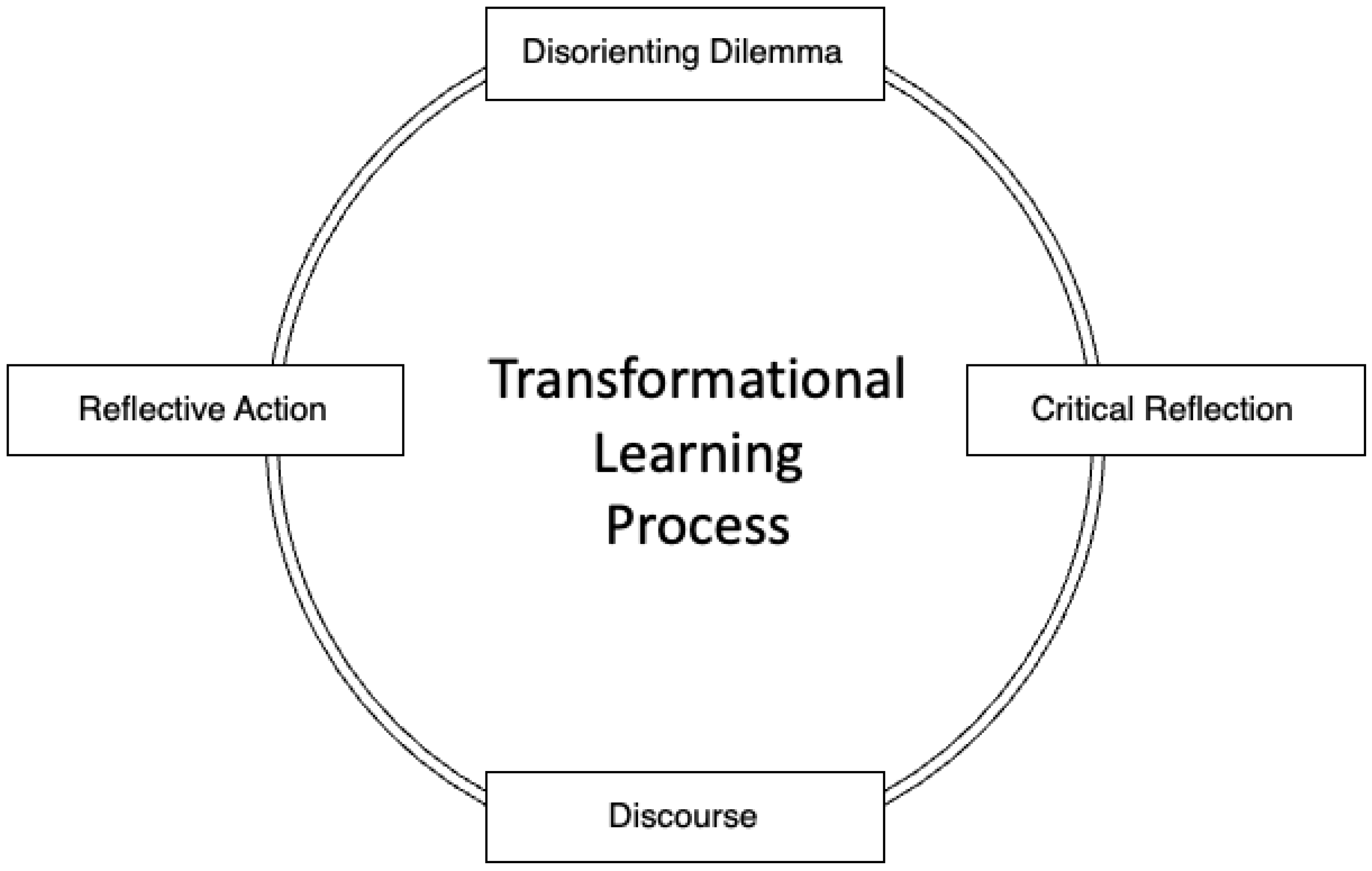
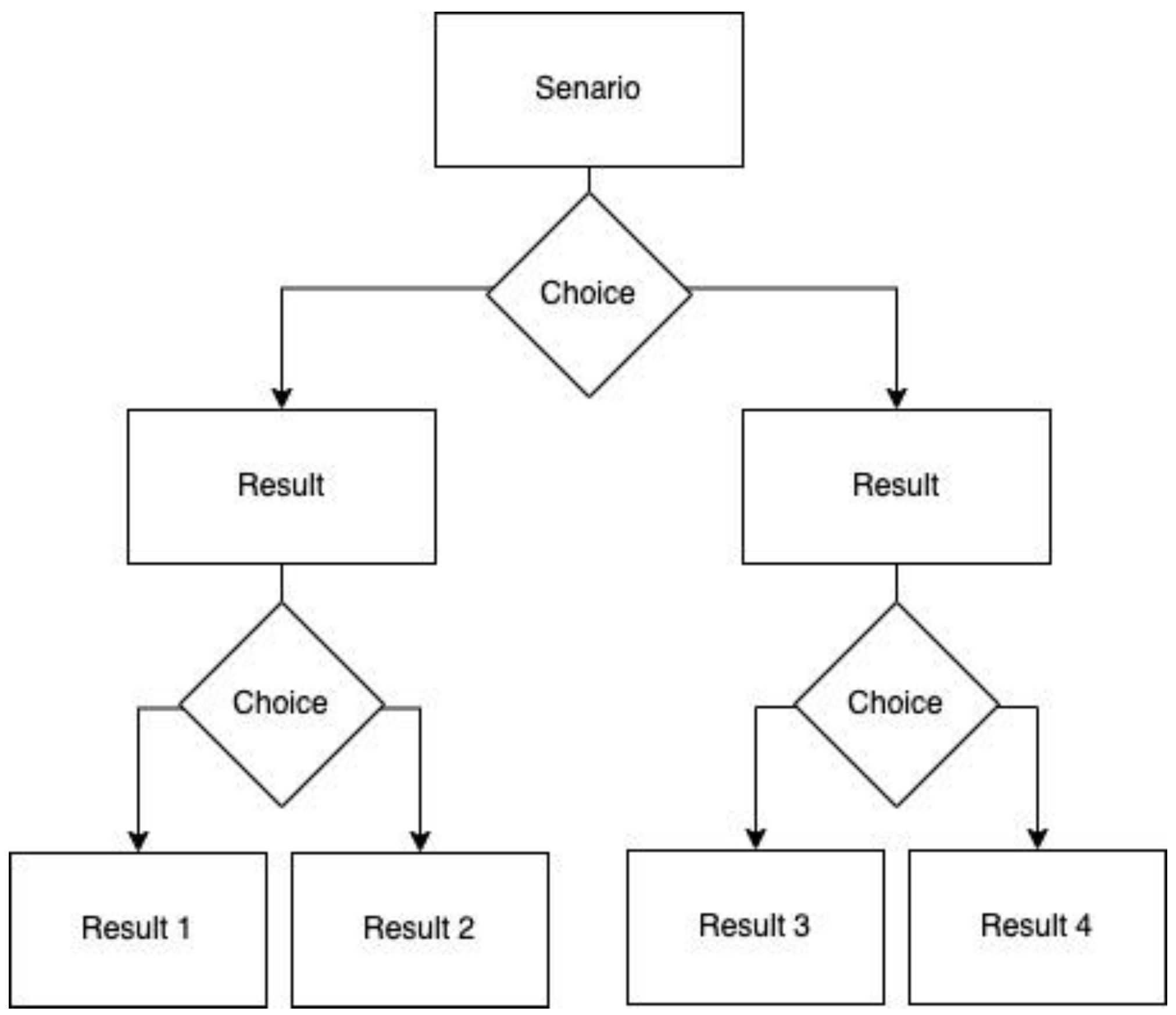
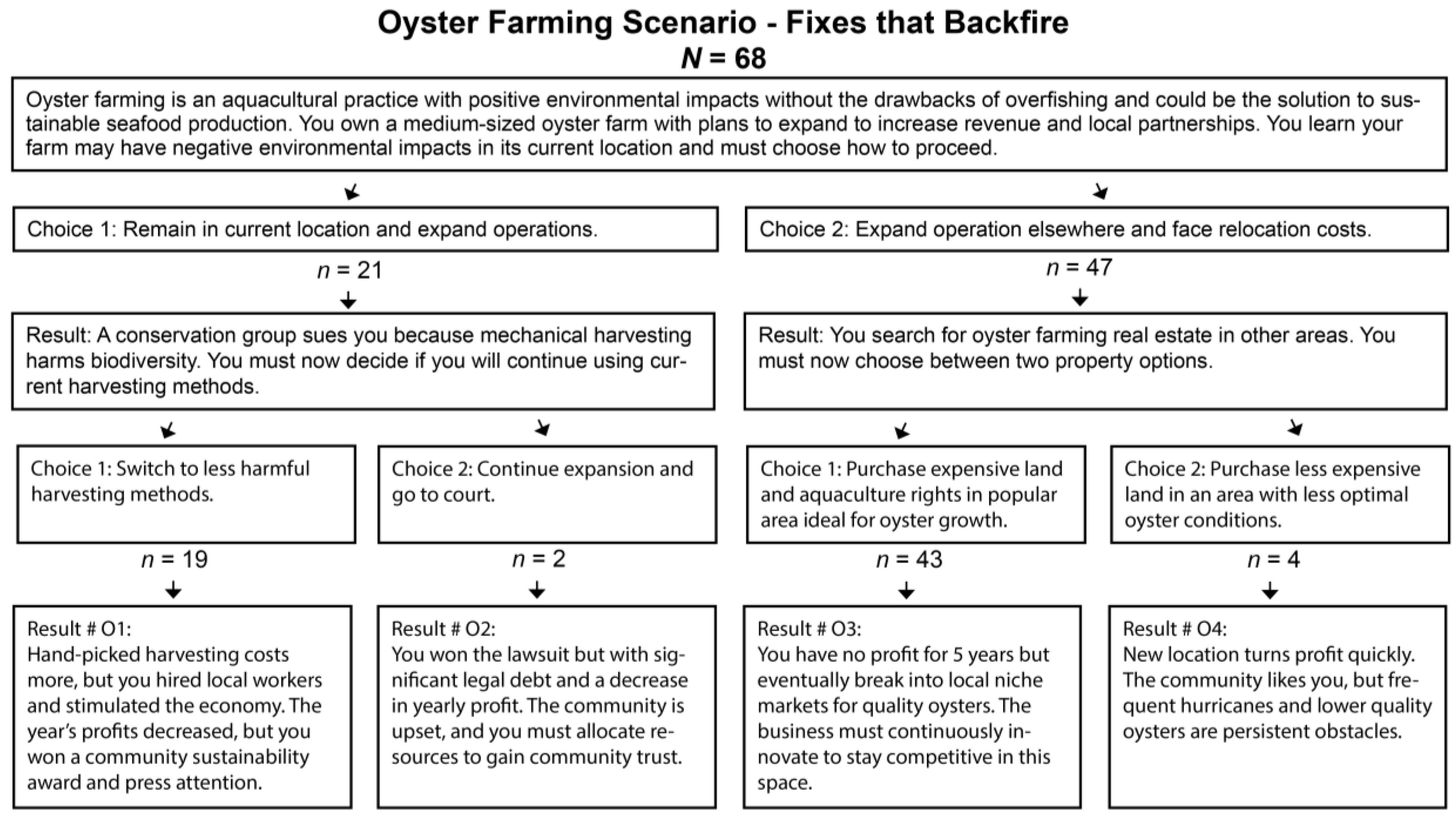
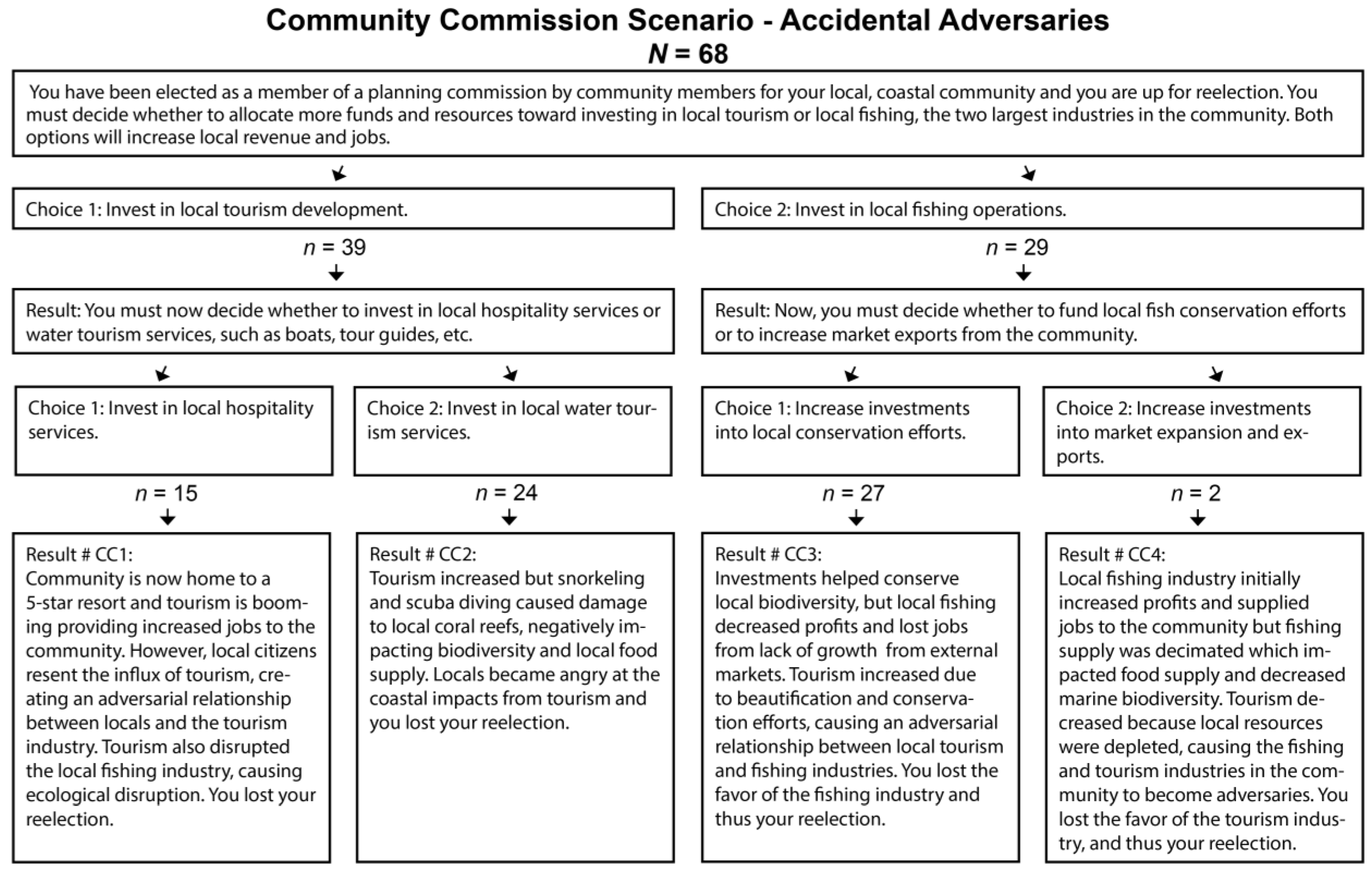
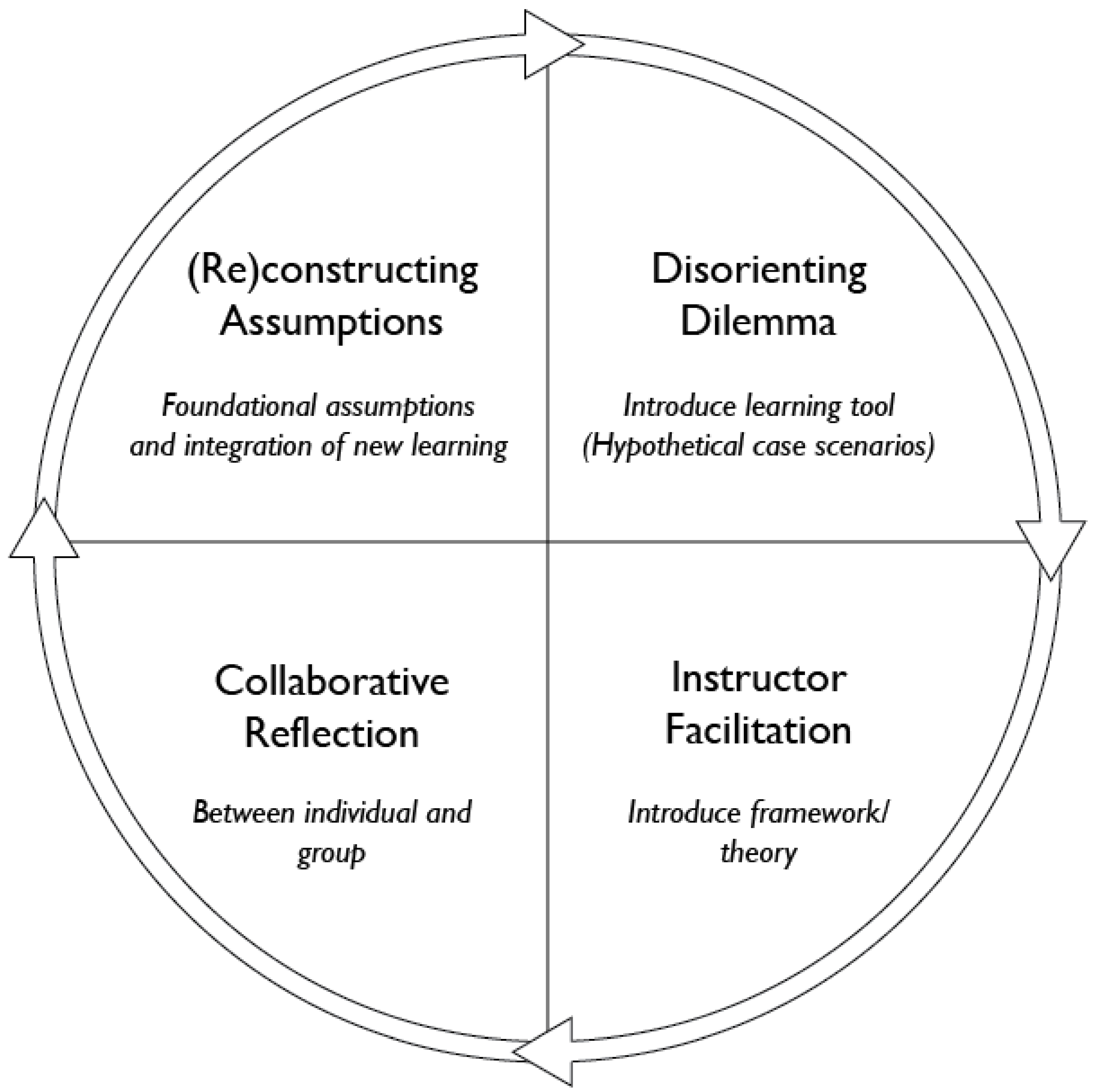
| F | % | |
|---|---|---|
| Gender Identity | ||
| Male | 20 | 29.4 |
| Female | 47 | 69.1 |
| Age | ||
| 18 | 3 | 4.4 |
| 19 | 15 | 22.1 |
| 20 | 14 | 20.6 |
| 21 | 16 | 23.5 |
| 22 | 13 | 19.1 |
| 23 | 6 | 8.8 |
| 24 | 1 | 1.5 |
| Race/Ethnicity a | ||
| White | 55 | 80.9 |
| Black or African American | 8 | 11.8 |
| Asian | 2 | 2.9 |
| Hispanic or Latino/a/x | 4 | 5.9 |
| Prefer to self-describe (Middle Eastern) | 1 | 1.5 |
| Student Classification | ||
| First-year student | 4 | 5.9 |
| Sophomore | 12 | 17.6 |
| Junior | 25 | 36.8 |
| Senior | 24 | 35.3 |
| Graduate student | 1 | 1.5 |
| Other (Exchange student) | 1 | 1.5 |
| College Enrollment | ||
| College of Agricultural and Environmental Sciences | 44 | 64.7 |
| College of Arts and Sciences | 9 | 13.2 |
| College of Business | 6 | 8.8 |
| School of Public and International Affairs | 2 | 2.9 |
| College of Engineering | 1 | 1.5 |
| College of Journalism and Mass Communication | 1 | 1.5 |
| College of Education | 1 | 1.5 |
| Undeclared | 1 | 1.5 |
| Research Question | Theme | Subtheme |
|---|---|---|
| Navigating hypothetical case scenarios from a systems-thinking perspective | Methods for reasoning through scenarios | Long-term mental frameworks |
| Appropriateness of solution for audience | ||
| Minimizing negative outcomes | ||
| Surprise and frustration | No correct answer | |
| Unmet expectations | ||
| Surprise at negative outcomes | ||
| Switching choice | ||
| Understanding of, and confidence in, choice | Justification of choice | |
| Comparing outcomes | ||
| Evaluating systems consequences | Prioritizing sustainability | |
| Prioritizing economics | ||
| Prioritizing community | ||
| Thinking through systems complexity | Imagining improvements | |
| Recognizing unintended consequences | ||
| Hypothetical case scenarios as a transformative-learning tool | Using previous knowledge and experiences | |
| Experiencing difficulties and confusion | ||
| Developing new ways of thinking | ||
| Experiencing positive educational outcomes |
Disclaimer/Publisher’s Note: The statements, opinions and data contained in all publications are solely those of the individual author(s) and contributor(s) and not of MDPI and/or the editor(s). MDPI and/or the editor(s) disclaim responsibility for any injury to people or property resulting from any ideas, methods, instructions or products referred to in the content. |
© 2023 by the authors. Licensee MDPI, Basel, Switzerland. This article is an open access article distributed under the terms and conditions of the Creative Commons Attribution (CC BY) license (https://creativecommons.org/licenses/by/4.0/).
Share and Cite
Sanders, C.E.; Byrd, A.R.; Gibson, K.E.; Golson, A.; Lamm, K.W.; Lamm, A.J. Teaching Systems-Thinking Concepts with Hypothetical Case Scenarios: An Exploration in Food-Systems Science Education. Foods 2023, 12, 2663. https://doi.org/10.3390/foods12142663
Sanders CE, Byrd AR, Gibson KE, Golson A, Lamm KW, Lamm AJ. Teaching Systems-Thinking Concepts with Hypothetical Case Scenarios: An Exploration in Food-Systems Science Education. Foods. 2023; 12(14):2663. https://doi.org/10.3390/foods12142663
Chicago/Turabian StyleSanders, Catherine E., Allison R. Byrd, Kristin E. Gibson, Aaron Golson, Kevan W. Lamm, and Alexa J. Lamm. 2023. "Teaching Systems-Thinking Concepts with Hypothetical Case Scenarios: An Exploration in Food-Systems Science Education" Foods 12, no. 14: 2663. https://doi.org/10.3390/foods12142663
APA StyleSanders, C. E., Byrd, A. R., Gibson, K. E., Golson, A., Lamm, K. W., & Lamm, A. J. (2023). Teaching Systems-Thinking Concepts with Hypothetical Case Scenarios: An Exploration in Food-Systems Science Education. Foods, 12(14), 2663. https://doi.org/10.3390/foods12142663







